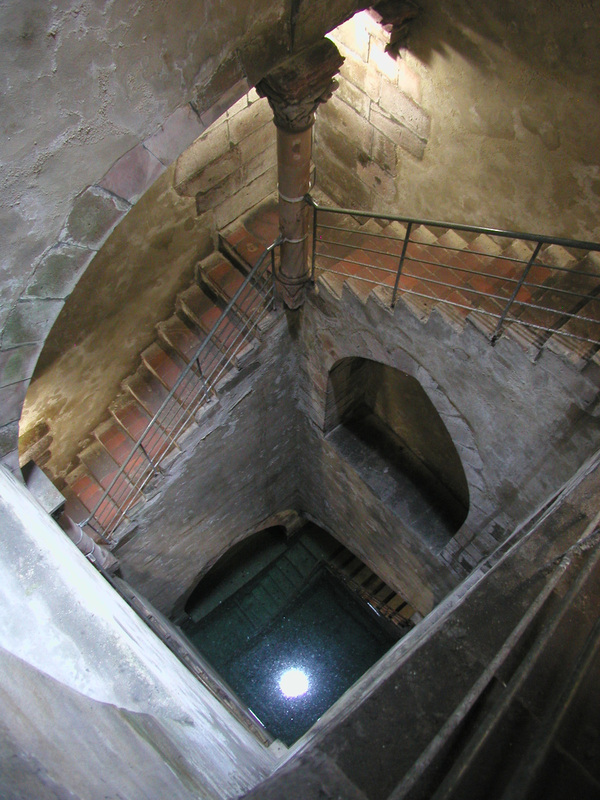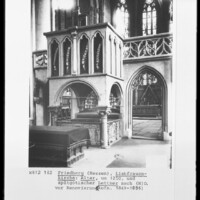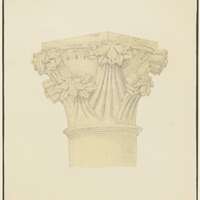Mikveh at Friedberg
Date:
1260
Location or Findspot (Modern-Day Country):
Germany
Description:
Jewish adults are required to attain spiritual purification on certain occasions by immersing in a mikveh (plural mikvaot), a pool of "living" or flowing water. In the Middle Ages mikvaot were usually excavated below a Jewish-owned property, deep enough to reach groundwater. Medieval mikvaot survive across Europe, including eight in Germany, and many more are known from texts. The one at Friedberg has a stone incised with the Latin date 1260 and another with the name Isaac of Koblenz in Hebrew, presumably the mikveh's founder. Light enters only from the ceiling to illuminate the 25-meter-deep shaft surrounded by stairs, so users coming at night must have carried lanterns or candles. Columns at the corners of the staircase have capitals carved with foliage designs very similar to those on the ciborium (now part of the chancel screen) at the town church (Stadtkirche) in Friedberg, which was founded in 1260; the same sculptors must have worked at both sites. Isaac of Koblenz hired high-quality artists and masons to provide this essential service for the flourishing Jewish community at Friedberg.
Relevant Textbook Chapter(s):
8
Repository and Online Resources:
• See more images of the mikveh on the Kornbluth Photography website.
• Listen to a one-hour illustrated lecture on "Architecture and Judaism: The Use of Ground Water in Medieval Mikvaot" by Dr. Neta Bodner.
Image Credits:
Stadtarchiv Friedberg, Navid Jamali, Flickr, Wikimedia Commons, www.gotik-romanik.de/










